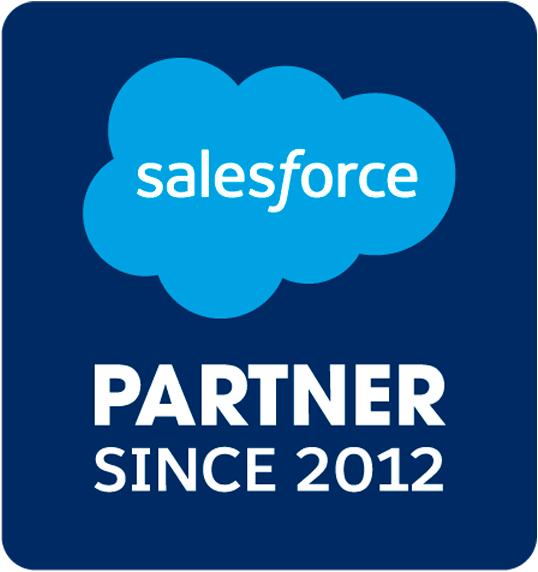In a previous post, we defined a few key aspects of digital marketing, focusing on how Salesforce helps power each term. It’s only fair, then, that we do a follow-up post on sales. Consider this your 101 guide to Salesforce and B2B selling, offering key definitions and information about how Salesforce makes the entire sales cycle more successful.
Account
Typically in B2B sales relationships, an account is the customer. Accounts can be categorized based on business size, revenue or size of account. With Salesforce, you can easily store and see every piece of pertinent information about an account, all at once: Owner, address, related contacts, activity history, open opportunities — the list goes on. By storing this data in a CRM, your team will cut down on siloed communication and boost collaboration.
Closing
Closing refers to closing an opportunity (more on opportunities in a bit) after a lead has made its way through your business’ sales process and decided to work with your company. In Salesforce, closing an opportunity is as easy as clicking a few buttons. More importantly, Salesforce stores the data from all closed opportunities, allowing you to easily analyze your team’s results and make more informed decisions and forecasts.
{{cta('7b70efef-33e4-46f4-865b-4f4ce4c2764f')}}
Contact
In business, contacts are what define your network. The more contacts and relationships
you grow, the easier it is to nurture leads and leverage your contacts into potential customers and revenue. As with accounts, Salesforce allows you to store and view all kinds of information about a contact: Title, phone number and email, recent activity, etc. And because Salesforce is a shared platform, all touch points with a contact are visible to your whole company, and not only the employee responsible for that touch point.
Lead
In Salesforce, a lead is a prospective customer who is interested in an organization’s products/services and who provides contact information. There are a number of ways to generate leads, but one of the most successful strategies is to run a marketing campaign — which can be launched and tracked using Salesforce.
Lead Conversion
Conversion is the end goal of the lead generation process. Once a prospect has met a certain set of predefined criteria — they have a need for your product/service, they have a budget set, etc. — they can be converted from the lead funnel to the opportunity pipeline (again, more on that later). In Salesforce, converting a lead automatically generates a contact, an account and an opportunity.
Opportunity
An opportunity is essentially a deal in progress. Once a lead has been converted, a sales rep’s goal is to sell them some quantity of their company’s product or service. In Salesforce, opportunity records track all the necessary details about a deal, including which account it’s for, who the players are and how much revenue it could potentially bring in.
Opportunity Pipeline
An opportunity pipeline is an effective way to manage, organize and track your business opportunities. The pipeline can also predict future sales revenues and win/loss ratios through past data. With Salesforce, that data is automatically available.
Proposal
Usually a written offer, a proposal specifies the product or service to be delivered in a particular deal, including pricing and other terms and conditions. In Salesforce, proposal templates are fully customizable.
Quota
A quota is a target set by an organization that dictates how much a sales team is expected to sell in a given time period (week, month, quarter or year). Salesforce dashboards make this information hyper visible, giving the full team constant awareness about their progress to date.
Sales Forecast
A forecast is a prediction of expected output of a sales department based on analysis of sales data from past periods or quarters. Utilizing your opportunity pipeline is a very useful way to gain an accurate sales forecast. And again, Salesforce makes it easy to access and sort this information however is most helpful.
If you want to dig deeper into B2B sales, check out our eBook:



